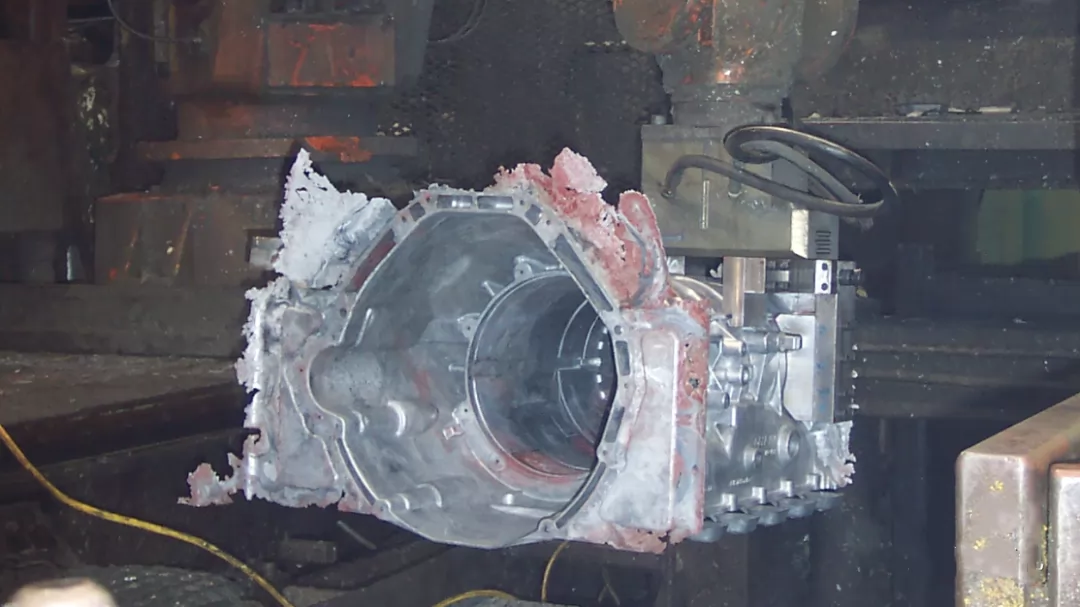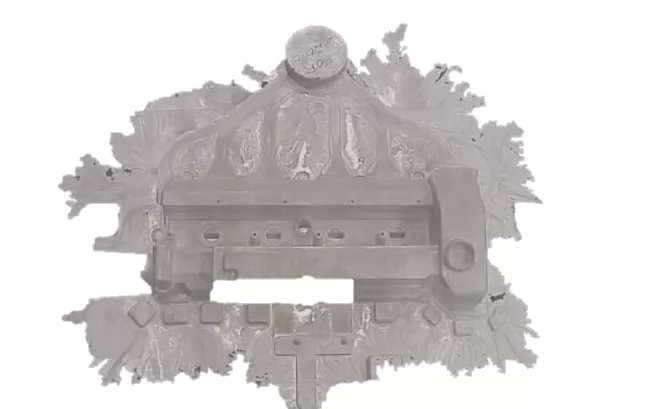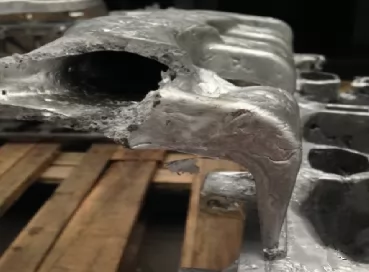
I remember the previous mold trials. If the old die-casting machine was selected, we would follow the "standard process" to ask: Is the die-casting machine still normal? Is the wall panel of the die-casting machine flat? The supervisor will respond: The product is still well pressed in the morning, and everyone will enter the next link by default. Generally, when there is flashing material in the test mold, the most nervous is the design engineer and the mold assembly engineer. With the guarantee of today's processing equipment and mold matching equipment, the possibility of the mold clamping not in place is very small, so the assembly engineer can no longer be nervous ( But the mentality of serving customers must not be biased).
Although the flashing material problem is not only a mold problem, but also a series of die-casting process parameter problems such as the wallboard problem of the die-casting machine, insufficient clamping force, excessive high-speed speed, and excessive boost pressure. But from my personal knowledge, most of them are mold problems (design problems). The following is a brief description of some of the factors and solutions that cause flash:

1. Clamping force
The calculation of clamping force is the first option to design a mold. To calculate the clamping force, the projected area of the casting, slider, gating system and slag discharge system must be measured and evaluated. The calculation of the projected area of the casting and slider is relatively simple, generally The actual 100% is included.
There is still a certain degree of experience in calculating the gating system and the slag discharge system. Due to the gradual improvement of the die casting company’s awareness of the quality of castings and the planning of the pre-production, the customer has long helped the die company determine the die casting machine platform, so the current large Some castings no longer have the problem of insufficient clamping force.
Four exhaust blocks are fully exhausted (here does not discuss how much the exhaust volume affects the internal quality). If the area of the exhaust block is counted as the projected area of the slag discharge system, it has exceeded the projected area of the casting, so Under normal circumstances, we only need to count the area before the teeth of the exhaust block, and the area behind the teeth can be omitted.
For the projected area of the gating system, it is mainly determined by the size and wall thickness of the casting: Generally, the high-speed starting point of small parts is relatively advanced, and the runner part is also in the high-speed filling state. There is no pre-solidification phenomenon around the runner, so the projected area is calculated It needs to be calculated at 100%; large parts generally need to be properly pre-filled, which means that part of the gating system is filled at a slower speed during the pre-filling process, and part of the surface of the gating system will solidify in advance during the slow filling process. See below

After the surface layer is solidified, the molten aluminum continues to provide the molten aluminum to the cavity through the middle channel (such cases are all derived from the actual fluidized plate experiment. This experiment has the problem of continuous energy supply and inertial flow, so this is only one A theoretical assumption, this experiment does not prove that the actual flow regime is like this, at least the thickness of the surface layer will have a large difference), considering the surface solidification, when we calculate the large parts and the larger area of the gating system, we generally take 70% The area is calculated (only personal experience).
Because of concerns about insufficient side flow, a fake gate was made as a transition part between runner and product. After this design, the projected area of the entire casting system will reach about 70% of the casting. If 100% is included, it needs to be changed. The matching of large die-casting machines, of course, each casting is different, and the experience factor will play a decisive role when the decision is difficult.
General civilian parts are 40-60Mpa, safety structure parts use about 70Mpa, powertrain parts use 70-90Mpa
I believe there have been cases where small die-casting machines press large products. The most typical ones are street lamp products with a projection area of about 4000cm^2. However, many companies use die-casting machines of about 1000T for production. Because of the comprehensive reasons of price and quality, since If you choose, you will be responsible for a series of die-casting issues, such as process shutdown and cleaning, personnel safety, low pass rate, late glue replenishment, customer complaints and other issues.
2.Injection center
The injection center discussed here is for the selection of the position of the barrel involved in the ranking of the mold structure, the pouring system and the slag discharge system. Each company has different preferences when designing the mold according to the price and technical level. There is no uniform standard. Some people like to pursue bilateral feeding to place the product vertically, others pursue the shortest filling stroke to place the product horizontally, and the pouring system is relatively open, and some are designed to be more compact.
3. Mold material size
The size of the mold material is closely related to the sealing surface of the key point. Once there is a problem with the sealing surface of the key point, the problem of flashing material is inevitable. I have always believed that the flowing aluminum liquid has the ability to "perceive", it can "perceive" where the mold has less sealing surface and where there is more sealing surface, so don't have the psychology of fluke to reduce the size of the material.
The size of the mold material needs to formulate a standard for the minimum margin distance. The current situation is that low-priced molds basically do not pay attention to this. If you can save it, the mold price is getting lower and lower. Of course, the price is only one of the reasons, the most important It is still the value of the mold company, whether it is to be responsible for the production stability of the die-casting customers or to make a little bit of the saved material costs. The size of the material should generally pay attention to the following positions:
Shunt cone position
The design of the shunt cone position has rarely attracted enough attention in China. Only designers who understand die-casting production will pay attention to this point. For example, the origin of production efficiency is determined by the cooling of the shunt cone and barrel. If you don’t understand die-casting production , Without understanding the pain points of die-casting, it is impossible to design the best shunt cone and barrel (due to the demand for fully automated production, European die-casting companies generally do better, and Japanese die-casting companies do more practical and simple).
Due to the poor force tolerance, this point is easy to be compressed and deformed. Once it is crushed, this position will form a permanent flashing material point. There are many solutions to the problems. The most basic thing is that the material should be appropriately enlarged. The preferred solution in Europe is to use a square material to make the shunt cone, so that there is enough pressure surface to ensure the strength of this position.
-
Exhaust position of slag bag
As far as I know, Japan generally has relatively few flashing materials. In Europe, large machines press small products. The clamping force is large enough without insufficient clamping force. Therefore, there are relatively few flashing materials. However, because Europe adopts high-speed The high-pressure die-casting process is also unavoidable to fly. If it is some relatively small flash, there is no problem. The automatic in-island trimming avoids the subsequent polishing process. Japan’s die-casting and molds have many unique know-hows. In terms of mold making details, the mold frame is often as flush as the mold core. This design concept theoretically increases the sealing surface of the slag bag exhaust. In addition, low-speed and low-pressure are commonly used in die-casting process, the smallest energy consumption and the longest mold life can produce products of sufficient quality. In addition, the design of the sealing material size of the exhaust groove around the exhaust block is also the focus of preventing flashing materials.







.png)


.png) +86-574-83036520
+86-574-83036520 +86-574-83008051
+86-574-83008051 sales@innovaw.com
sales@innovaw.com

.png)

.png)
.png)
.png)

.png)
.png)
.png)











.png)

